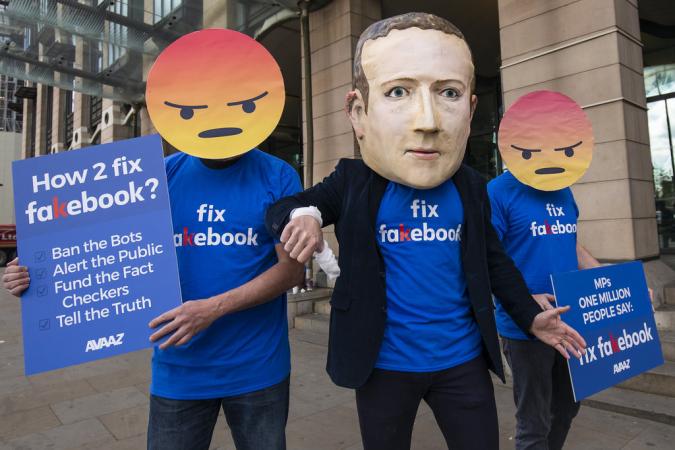On 31st July 2018, Facebook has posted an article in its Newsroom explaining how the platform is being used to manipulate the Facebook-community. 32 pages have been removed by Facebook and Instagram because they were found to be “involved in coordinated inauthentic behavior.” The manipulation of digital video and audio files, has become increasingly sophisticated and accessible. While the world is more or less accustomed to the idea of image manipulation through ‘photoshopping’, video or audio files that present people saying of doing things they never did nor said, pose a new kind of challenge to democracies and national security. Audio and video manipulation then enter a realm that is generally described as ‘deep fake’.
On 31st July 2018, Facebook has posted an article in its Newsroom explaining how the platform is being used to manipulate the Facebook-community. 32 pages have been removed by Facebook and Instagram because they were found to be “involved in coordinated inauthentic behavior.”
The action against this inauthentic behavior was coordinated with US law enforcement agencies, Congress, other technology companies, and the Atlantic Council’s Digital Forensic Research Lab. The blocked accounts were used to influence public debates while being anonymous and the “real people” behind them untraceable. As investigations are continuing, it is unclear which group or individuals are behind these blocked accounts.
But apart from fake accounts on Facebook, there is also the possibility of manipulating video and audio files. The manipulation of digital video and audio files, has become increasingly sophisticated and accessible. You only have to watch the latest Star Wars episode to see the life like performance of actors who already passed away. While the world is more or less accustomed to the idea of image manipulation through ‘photoshopping’, video or audio files that present people saying of doing things they never did nor said, pose a new kind of challenge to democracies and national security. Audio and video manipulation then enter a realm that is generally described as ‘deep fake’. This technology, for example, has been used to generate fake pornographic videos of celebrities without their consent.
Fabricated stories or half-truths can easily be spread by (social) media and cause social unrest or political outcry. In Germany, a story of a Russian girl allegedly raped by Arab immigrants was proven to be false, but had nonetheless major political and social impact. And more recently a manipulated video appeared in which Emma González, survivor of the shooting at Marjory Stoneman Douglas High School in Parkland Florida, seems to rip up the US Constitution. In reality, Emma Gonzalez rips up a paper with a bullseye in a video that accompanies an article on the Teen Vogue website, calling out for gun control. The manipulated video went viral and lead to a further distortion of the debate on gun control in the US.
This is a good example of how a deep fake video, in combination with social media can cause a distortion in a democratic debate. It has the potential to distort the public opinion, generate political scandals and even manipulate the outcome of elections. Furthermore, deep fakes can pose a threat to national security, for instance when used to generate fake evidence of war crimes or generally distract national security agencies.
Apart form the threats to democracy and national security, deep fakes can deeply infringe the right to privacy of an individual person, as demonstrated in the case of Emma González and celebrities that find their image misused in deep fake video’s.
Governments worldwide struggle with the question how to deal with deep fakes and protect their democracies and their citizens. On one hand video and audio manipulation is a technological tool which can be used by the entertainment industry. On the other, these videos can easily promote racism and hate speech. In Germany a law that obligates tech companies to remove hate speech, came into force January this year. It is a first step in a long battle to fight hate speech and possibly deep fake videos. However, it will sometimes be hard to determine when a deep fake video is an expression of free speech, or proponent of hate speech.
The EU also recognizes the threats of disinformation. On April 26th, 2018 it released a Communication: “Tackling online disinformation: a European approach." In this document the European Commission presents an approach to combat disinformation, based on empowerment of European citizens. An example is the website “EU vs Disinfo” which tries to analyze and disproof cases of disinformation.
The battle against deep fakes has only just begun. As technology progresses, so must lawmakers and government policy. The removal of several pages by Facebook in cooperation with national authorities is just one small drop in the fake deep.
Disinformation wars Foreign Policy
Experts Bet on First Deepfakes Political Scandal IEEE Spectrum
Fake News European Commission
